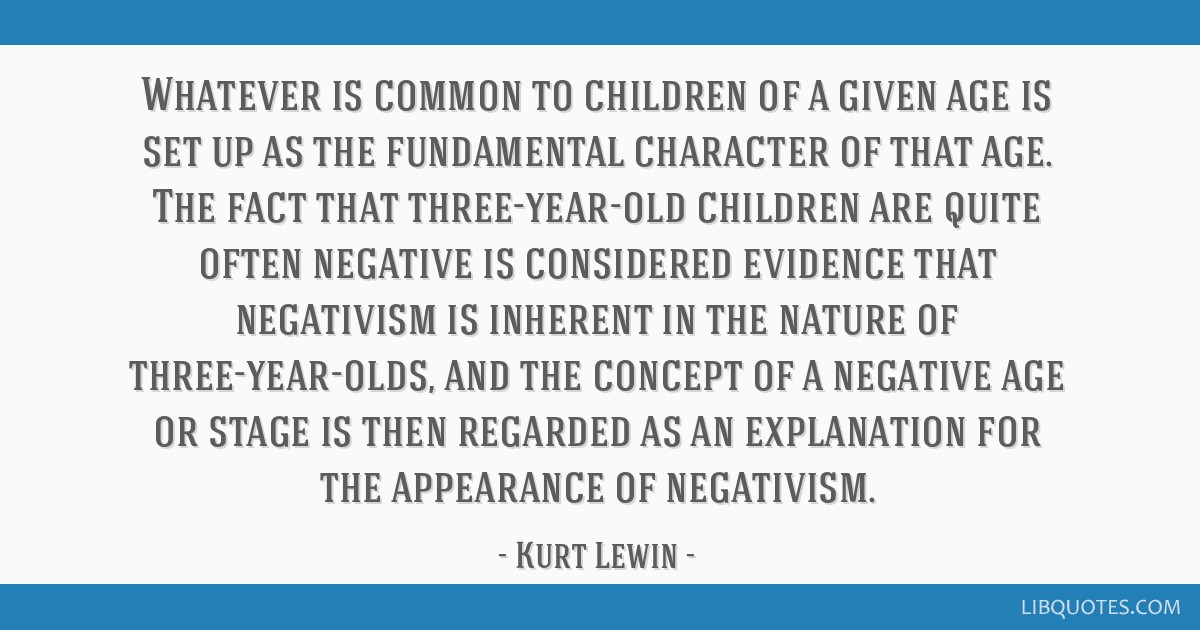Whatever is common to children of a given age is set up as the fundamental character of that age. The fact that three-year-old children are quite often negative is considered evidence that negativism is inherent in the nature of three-year-olds, and the concept of a negative age or stage is then regarded as an explanation for the appearance of negativism.
p. 153 as cited in: Eells, T. D. (2007). "Generating and generalizing knowledge about psychotherapy from pragmatic case studies". In: Pragmatic Case Studies in Psychotherapy, Vol 3, Nr. 1, p. 35-54. - The conflict between Aristotelian and Galileian modes of thought in contemporary psychology, 1931























